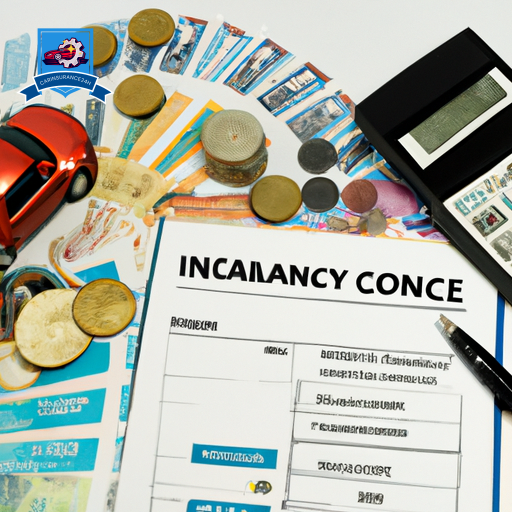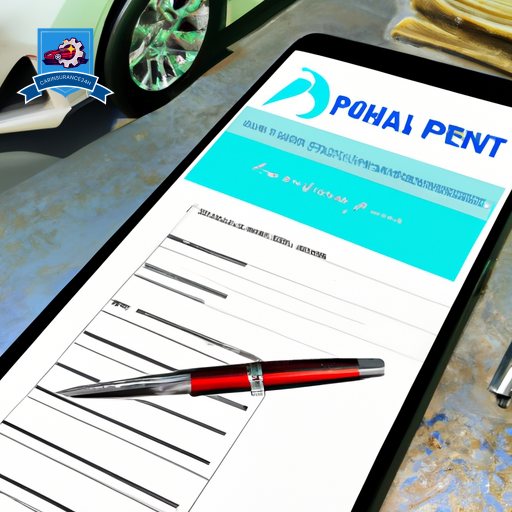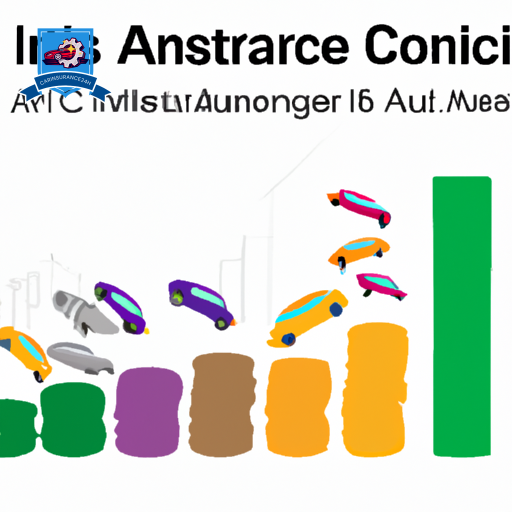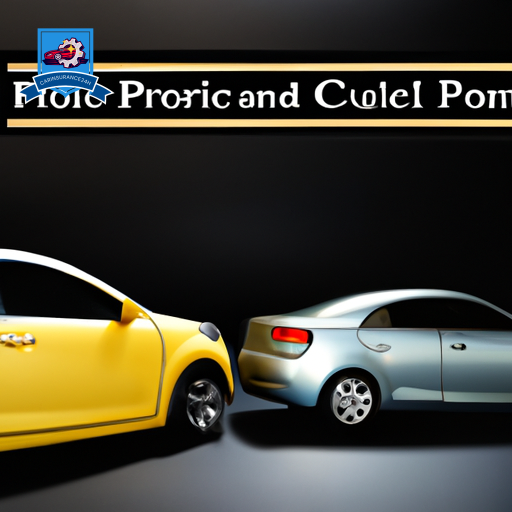Collision insurance premiums are a critical component of automotive insurance policies, calculated through a meticulous assessment of risk factors associated with the insured vehicle and its operator.
This calculation integrates elements such as the driver’s history, including past accidents and traffic violations, the type of vehicle insured, and even the geographical location where the vehicle is primarily operated. Each of these factors plays a distinct role in determining the financial risk that the insurance company assumes, influencing the premium rates.
However, the intricacies of how these elements are weighted and the potential strategies for mitigating premium costs remain a complex puzzle for many policyholders. Revealing these aspects could greatly impact one’s understanding and management of their collision insurance premiums.
Understanding Risk Assessment

Risk assessment, a cornerstone of the insurance industry, involves meticulously analyzing the probability and potential impact of an event to determine appropriate premium rates for collision insurance. This process is pivotal in ensuring that the premiums collected are sufficient to cover potential claims while also maintaining the financial stability of the insurance provider. A fundamental aspect of risk assessment is the evaluation of various factors that may influence the likelihood and severity of a collision.
One such factor is the policyholder’s credit score. Insurers have found a correlation between credit scores and the propensity for filing claims. Individuals with higher credit scores are perceived as less risky, leading to potentially lower premium rates. This assessment is based on statistical analysis indicating that those with better credit management tend to exhibit more responsible behavior overall, including while driving.
Additionally, policy limits play a critical role in determining premium rates during the risk assessment process. Policy limits refer to the maximum amount an insurance company will pay for a covered loss. Higher policy limits equate to greater potential financial risk for the insurer in the event of a collision. Consequently, policies with higher limits typically command higher premiums. The rationale behind this is straightforward: the more coverage an insurance provider offers, the more they stand to lose, necessitating higher charges to the policyholder to offset this risk.
The Role of Driving History
A driver’s history is a critical component in the calculation of collision insurance premiums, as it directly reflects their likelihood of being involved in future accidents. Insurance companies meticulously assess an individual’s driving record to gauge their risk level. This assessment includes scrutinizing past traffic violations, which serve as indicators of potentially risky behavior on the road. Violations such as speeding tickets, running red lights, or instances of impaired driving suggest a higher risk of future claims, leading to increased premium costs.
Additionally, the status of a driver’s license plays a significant role in this evaluation. A suspended or revoked license, often resulting from serious or repeated offenses, signals a high level of risk to insurers. In contrast, a clean driving record with no violations or suspensions indicates a responsible driver, likely resulting in lower insurance premiums.
Insurance companies use a detailed analysis of these factors to determine the probability of a driver filing a future claim. The logic is straightforward: a history of traffic violations or issues with license status increases the likelihood of accidents, thereby elevating the risk for the insurer. Consequently, drivers with such histories are charged higher premiums as a way to compensate for the heightened risk they represent.
Vehicle Type and Premiums
Beyond the driver’s history, the type of vehicle being insured greatly influences the calculation of collision insurance premiums. Insurance companies meticulously evaluate various factors related to the vehicle itself that can affect the likelihood of accidents and the cost of potential claims. These calculations are not arbitrary; they are rooted in statistical analysis and historical data, ensuring that premiums are reflective of the actual risk posed by insuring a particular type of vehicle.
When determining collision insurance premiums, insurers consider:
- Safety features: Vehicles equipped with advanced safety features such as automatic emergency braking, lane departure warnings, and adaptive headlights are perceived as less risky. These features can significantly reduce the chances of collisions, leading to potentially lower insurance premiums.
- Manufacturer reliability: The track record of a vehicle’s manufacturer plays a critical role. Brands known for their durability and low maintenance costs are often favored in the calculation of premiums. A vehicle from a manufacturer with a history of reliability issues may attract higher premiums due to the increased risk of breakdowns and subsequent accidents.
- Vehicle age: Newer vehicles, while often equipped with better safety features, can be more expensive to repair or replace, sometimes resulting in higher premiums. Conversely, older vehicles might attract lower premiums but could lack modern safety features, creating a complex balancing act for insurers.
- Type of vehicle: Sports cars or high-performance vehicles are typically associated with a higher risk of accidents and expensive repairs, leading to higher premiums. Family sedans or SUVs with strong safety records, on the other hand, might be cheaper to insure.
In essence, the interplay between these vehicle-related factors, alongside safety features and manufacturer reliability, directly shapes the calculation of collision insurance premiums.
Geographic Impact on Rates
While vehicle-related factors considerably influence collision insurance premiums, the area where a driver lives and operates their vehicle also plays a pivotal role in determining rates. Geographic location affects insurance costs due to varying risks of natural disasters, traffic congestion, and population density. Insurers assess these factors to gauge the likelihood of accidents or damage, adjusting premiums accordingly.
Natural disasters such as hurricanes, floods, or earthquakes can notably increase the risk of damage to vehicles, leading to higher insurance premiums in prone areas. For instance, a car parked on a coastal area frequently hit by hurricanes would be more expensive to insure compared to one in a landlocked region with minimal natural disaster risks.
Population density directly impacts collision rates. Urban areas, with their high population density and traffic congestion, often experience more accidents than rural areas. This increased risk translates to higher insurance premiums for drivers in densely populated locales.
To illustrate the impact of geographic location on insurance rates, consider the following table comparing average annual premiums across different settings:
| Location Type | Average Annual Premium |
|---|---|
| High Risk Natural Disaster Area | $1,500 |
| Urban Area with High Population Density | $1,300 |
| Suburban Area | $1,100 |
| Rural Area with Low Population Density | $900 |
| Low Risk Natural Disaster Area | $800 |
This table exemplifies how insurers consider both the natural disaster risk and population density of an area when calculating collision insurance premiums. It underscores the importance of geographic factors alongside vehicle-related aspects in rate determination.
Reducing Your Premiums
Understanding the various strategies for reducing collision insurance premiums can lead to substantial savings for drivers. The process of calculating these premiums takes into account a range of factors, including the driver’s history, the vehicle’s features, and more. However, by taking proactive steps, individuals can effectively lower their insurance costs. This not only makes collision coverage more affordable but also guarantees drivers can manage their budgets more effectively without compromising on their level of protection.
To visualize the potential savings, consider the following strategies:
- Increase Your Policy Deductible: Opting for a higher deductible can greatly reduce your monthly premiums. This means you agree to pay more out of pocket in the event of an accident, but it lowers your overall insurance cost during the policy term.
- Improve Your Credit Score: Insurance companies often use credit scores as an indicator of a driver’s reliability. A higher credit score can lead to lower premiums, as it suggests a lower risk of filing claims.
- Bundle Insurance Policies: Combining your collision insurance with other policies, such as homeowners or life insurance, under the same provider can access discounts.
- Drive Safely: Maintaining a clean driving record is important. Insurers reward drivers who avoid accidents and traffic violations with lower premiums.
Frequently Asked Questions
How Does the Age of the Driver Influence Collision Insurance Premiums?**
Ironically, the fountain of youth may not be as beneficial for collision insurance premiums. As a driver’s age decreases, premiums often increase due to perceived inexperience. Completing driver training can secure policy discounts, mitigating this effect.
This Question Seeks Information Outside the Discussion on Risk Assessment, Driving History, Vehicle Type, Geographic Impact, and Reducing Premiums. It Specifically Targets Age as a Factor, Which Might Not Be Directly Covered in the Outlined Sections.
Collision insurance premiums are influenced by several factors, including policy limits and deductible amounts, which reflect the coverage scope and out-of-pocket costs in the event of a claim, independently of the driver’s age.
Can the Purpose for Which a Vehicle Is Used (Personal Vs. Business) Affect the Cost of Collision Insurance?**
Yes, the purpose for which a vehicle is used, whether for personal or business reasons, can greatly influence the cost of collision insurance. Factors like vehicle color and seasonal changes may also impact premiums.
This Question Delves Into the Usage Purpose of the Vehicle, a Topic Not Explicitly Covered in the Sections Mentioned. It’s Relevant Because the Risk Profile Can Significantly Differ Between Personal and Business Use.
The question explores how vehicle color and parking location might influence insurance considerations, focusing on the impact these factors have on risk assessment and, consequently, on the insurance premium for different usage purposes.
How Do Advancements in Vehicle Safety Features and Technology Impact Collision Insurance Costs?**
Advancements in vehicle safety features and technology can lead to a reduction in collision insurance costs due to decreased accident likelihood. However, higher repair costs and technology adoption rates may offset these potential savings.










